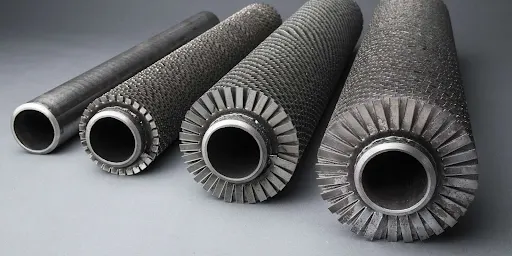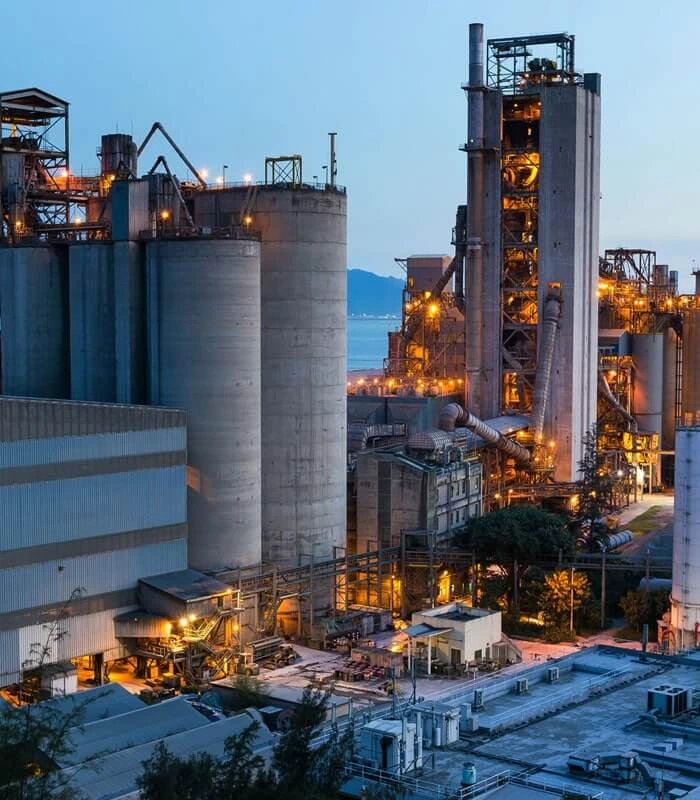vishal@solitaire-overseas.com
High Finned Tubes Supplier
High Finned Tubes Manufacturer and Supplier in India
What Are High Finned Tubes?

High Finned Tubes are specialized heat exchanger tubes designed to maximize heat transfer efficiency in applications involving a significant temperature difference between fluids. They accomplish this by adding fins to the tubes to increase their external surface area. The fluid (typically air or gas) traveling over the exterior of the tube and the fluid moving inside are able to exchange heat more efficiently thanks to these fins.
High fin tubes are designed for durability, ease of use, and excellent heat transfer, making them ideal for applications where space, efficiency, and low maintenance are critical.
- Enhanced Blowing Efficiency: Due to the "H" style fins mounted on either side of the tube increases airflow and promotes an efficient blowing effect, improving heat transfer and minimizing ash and debris build-up.
- Compact and Cost-Effective: This type of tube saves space which results in a lighter more compact tube and therefore lower material and purchase costs.
- Efficient Airflow Management: The unique design utilizes airflow effectively, allowing for better space utilization without reducing the surface area of the fins. The fins are thicker yet lightweight, maximizing heat transfer efficiency.
- Independent Fins: The fins are positioned parallel to each other without forming a helix angle, which simplifies ash removal. This layout reduces wear and tear, especially in systems that frequently require maintenance or are exposed to ash-prone environments.
- Reduced Dust Accumulation: The "H" Shape improves airflow along the windward side, increasing airspeed across the tube surface. This yawing motion produces maximum axial airflow and is most effective in lowering dust accumulation, extending the tube's life, and minimizing maintenance.
| Product Specification | |||
| Tube OD | 25~73 (mm) | 1/2”~2 1/2”(NPS) | |
| Tube Wall Thk | 3.0~6.0 (mm) | 0.118”~0.236” | |
| Tube Length | ≤18,500 (mm) | ≤60.7 ft | |
| Fin Thk | 1.5~4.0 (mm) | 0.060”~0.157” | |
| Fin Height | 25~45 (mm) | 0.98”~1.77” | |
| Fin Length | 50~250 (mm) | 1.97”~9.8” | |
| Fin Pitch | 20~117 FPM | 1~3 FPI | |
| Fin Type | H, HH | ||
| Material Combinations | |||
| Fin Material | C.S. (most common grade: Q235B) | ||
| S.S. (most common grade are AISI 304, 316, 409, 410, 321,347,2205) | |||
| A.S. (most common grade is 12 CrIMoV) | |||
| Tube Material | C.S. (most common grade: A106 Gr.B) | ||
| S.S. (most common grade are TP304,316, 321, 347) | |||
| A.S. (most common grade are T/P5,9,11,22,91) | |||
| Applied Temperature |
300°C | ||
| TYPE | NAME | BARE TUBE MATERIAL |
FIN TUBE MATERIAL |
BARE TUBE DIAMETER(MM) |
FIN SPECIFICATION(MM) | ||
| FIN PITCH |
FIN HEIGHT |
FIN THICK |
|||||
| WELDING | H/HH TYPE FIN TUBE | CARBON STEEL,ALLOY,STAINLESS STEEL | CARBON STEEL,ALLOY,STAINLESS STEEL | 25-63 | 8-30 | ?200 | 1.5-3.5 |
- Excellent wear resistance in the same other conditions, the wear life is 3-4 times.
- Fouling reduced
- Reduce the resistance of exhaust gas
- Fins and steel pipe welding fusion rate is high
- Compact structure, high heat efficiency
- Shock-proof and noise reduced
- Convenient for installation, operation and maintenance

| Waste Heat Boilers:H-fin tubes are typically utilized in projects as part of waste heat recovery systems in order to increase heat transfer and be more efficient by using the waste heat from the exhaust gas. |
| Economizers: In economizers, the high finned tubes aid in utilizing less fuel since the feedwater can be preheated eliminating the need for as much energy to heat the water in the next step in the boiler. |
| Power Plant Boilers: H-fin tubes can enhance the design of a power station boiler. Because of the efficient heat transfer the H-fin tube design provides, it supports the performance and efficiencies of the power station boiler generating steam at elevated pressures and temperatures to increase overall energy output. |
| Marine Boilers: H-fin tubes are often used in marine boilers which are subject to rough treatment in a marine environment. H-fin components are utilized to facilitate safe and reliable heat transfer for propulsion and auxiliary systems on the ship or vessel. |
| Heat Exchangers: H-fin tubes are favorably suited to applications as heat exchangers because they increase the available surface area for heat transfer between two or more fluids which translates into more heat transfer occurring in a less amount of time. This makes H-fin tube systems particularly suitable for the more industrial heating and cooling technologies. |
| Coolers: With systems used for cooling, like air coolers and condensers, H-fin tubes will efficiently remove heat in systems with a quick cooling requirement for air-cooled systems |
FAQ
High finned tubes are engineered to maximize heat transfer performance in demanding applications. They are intrinsic to have specialized construction out of resistant alloys like stainless steel, lightweight, and durability. They have superb heat transfer properties, experience generally minimal corrosion properties, and withstand high temperatures very effectively.
High fin tubes are best for applications with a substantial temperature differential between the two fluids where the design is intended to maximize heat transfer. Conversely, low fin tubes are similar in function conversion but a better fit where the temperature differential is more modest. The selection of high or low fin tubes in heat exchangers depends solely on the thermal requirements of the application.
High finned tubes are manufactured from many different materials. Generally, high finned tubes are manufactured from stainless steel, carbon steel, copper alloys, aluminum, etc. The appropriate material is selected from a variety of thermal, temporal, and corrosion resistant properties.
Yes, high finned tubes can totally be tweaked to fit exactly what you need, like changing how tall the fins are, how close they are together, the tube size, how long they are, and what they're made of to suit the specific thermal and mechanical requirements of any application.
Yes, especially when made from corrosion-resistant alloys such as stainless steel or copper-nickel. Material selection is very important for chemically/aggressively, or marine spaces.
Choosing the right item depends on factors like temperature, pressure, medium type, environmental conditions and needed heat transfer rates. For best results, consult with a specialist or vendor when making selections.


 Table of Content
Table of Content